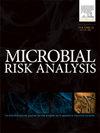A comparison of machine learning models for predicting Vibrio parahaemolyticus in oysters
IF 4
4区 环境科学与生态学
Q2 ENVIRONMENTAL SCIENCES
引用次数: 0
Abstract
Vibrio parahaemolyticus, a major seafood pathogen, threatens public health as oyster consumption rises. We evaluated 14 machine learning models to predict its concentrations in oysters, achieving high accuracy (Concordance Correlation Coefficient, CCC > 0.85 training, > 0.9 testing, except bag-MARS) across diverse algorithms. Processing times varied from 23 min (KNN) to 162 min (bag-RPart), highlighting computational trade-offs. Five top models—Elastic Net (EN), Random Forest (RF), XGBoost, Light Gradient-Boosting Machine (L-GBM), and Cubist (39–92 min)—were selected for their performance and efficiency, forming a robust toolkit for shellfish safety monitoring. Variable importance and partial dependence plots identified sea surface temperature (SST) and wind as primary drivers, with SST thresholds of 16–26 °C driving proliferation and wind showing mixed effects (negative >4 m/s, positive >6 m/s). Precipitation, salinity (>19 ppm), and pH (7.5–7.7) played supplementary roles. Lagged variables (e.g., SST_imX_25) underscored temporal dynamics, supporting real-time monitoring and risk assessment strategies.

预测牡蛎中副溶血性弧菌的机器学习模型比较
副溶血性弧菌是一种主要的海产品病原体,随着牡蛎消费量的增加,它威胁着公众的健康。我们评估了14个机器学习模型来预测其在牡蛎中的浓度,取得了很高的准确性(一致性相关系数,CCC >;0.85培训,>;0.9测试,除了袋子-火星)跨不同的算法。处理时间从23分钟(KNN)到162分钟(bag-RPart)不等,突出了计算权衡。五个顶级模型-弹性网(EN),随机森林(RF), XGBoost,光梯度增强机(L-GBM)和立体派(39-92分钟)-被选择为它们的性能和效率,形成了一个强大的贝类安全监测工具包。变量重要性图和部分依赖性图显示,海温和风是主要驱动因素,海温阈值为16-26℃驱动扩散,风的影响混合(负4 m/s,正6 m/s)。降水、盐度(19 ppm)和pH(7.5 ~ 7.7)起辅助作用。滞后变量(例如,SST_imX_25)强调时间动态,支持实时监测和风险评估战略。
本文章由计算机程序翻译,如有差异,请以英文原文为准。
求助全文
约1分钟内获得全文
求助全文
来源期刊

Microbial Risk Analysis
Medicine-Microbiology (medical)
CiteScore
5.70
自引率
7.10%
发文量
28
审稿时长
52 days
期刊介绍:
The journal Microbial Risk Analysis accepts articles dealing with the study of risk analysis applied to microbial hazards. Manuscripts should at least cover any of the components of risk assessment (risk characterization, exposure assessment, etc.), risk management and/or risk communication in any microbiology field (clinical, environmental, food, veterinary, etc.). This journal also accepts article dealing with predictive microbiology, quantitative microbial ecology, mathematical modeling, risk studies applied to microbial ecology, quantitative microbiology for epidemiological studies, statistical methods applied to microbiology, and laws and regulatory policies aimed at lessening the risk of microbial hazards. Work focusing on risk studies of viruses, parasites, microbial toxins, antimicrobial resistant organisms, genetically modified organisms (GMOs), and recombinant DNA products are also acceptable.
 求助内容:
求助内容: 应助结果提醒方式:
应助结果提醒方式:


